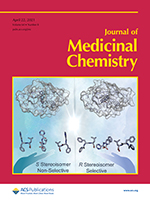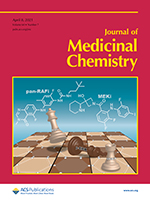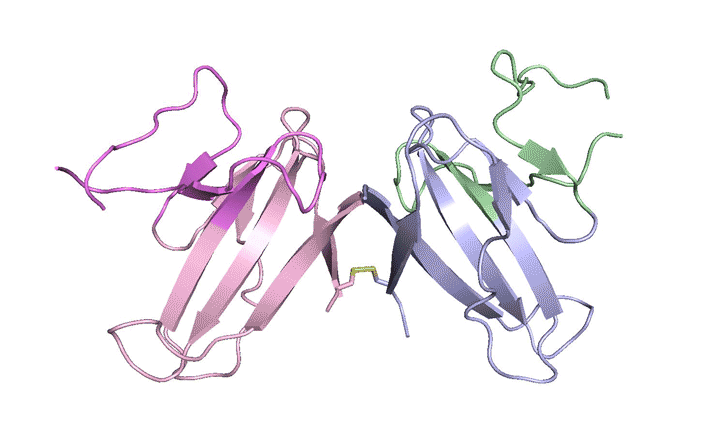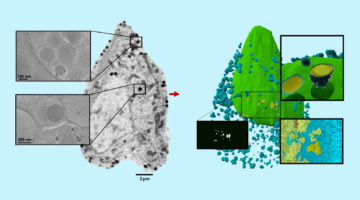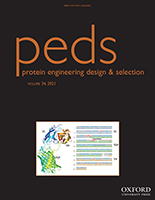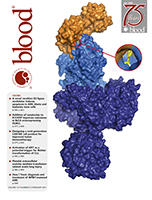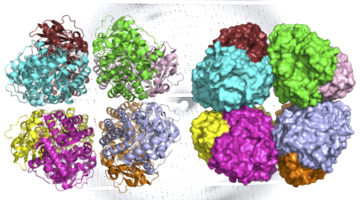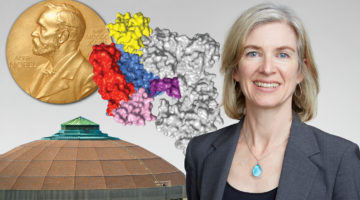A highly sensitive lateral flow assay—the same type of device used in home pregnancy tests—could be developed using pairs of rigid antibodies that bind to the SARS-CoV-2 nucleocapsid protein. SAXS data showed that a particular pair of monoclonal antibodies bound to the nucleocapsid protein very strongly and stably, in part due to the antibodies’ rigidity. Read more »
Structure-Based Design of Selective LONP1 Inhibitors for Probing In Vitro Biology
LONP1 is an AAA+ protease that maintains mitochondrial homeostasis by removing damaged or misfolded proteins. Elevated activity and expression promotes cancer cell proliferation and resistance to apoptosis-inducing reagents. Herein, we report the development of selective boronic acid-based LONP1 inhibitors using structure-based drug design as well as the first structures of human LONP1 bound to various inhibitors. Read more »
Targeting KRAS Mutant Cancers via Combination Treatment: Discovery of a 5-Fluoro-4-(3H)-quinazolinone Aryl Urea pan-RAF Kinase Inhibitor
The cover feature shows a chessboard (representative of KRAS mutant cells) and how the concerted action of the MEK inhibitor cobimetinib (rook) and the new selective pan-RAF inhibitor GNE-0749 (queen) force the opposing king (phospho-ERK, the downstream signaling node of RAF and MEK) into checkmate. Read more »
Mystery Protein Helps COVID–19 Avoid Immunity
Using the Advanced Light Source (ALS), researchers solved the structure of ORF8, a protein specific to SARS-CoV-2. Understanding the structure of ORF8 opens the door to therapy studies targeting SARS-CoV-2, the virus responsible for causing COVID-19. Read more »![]()
![]()
To Speed Discovery, Infrared Microscopy Goes “Off the Grid”
Researchers developed a highly efficient way to collect infrared microscopy data that avoids the use of slow, grid-based raster scans. The method substantially reduces image-acquisition times by autonomously increasing sampling density in regions of interest, facilitating infrared spectromicroscopy of biochemical processes in real time. Read more »
3D Whole-Cell Mapping of Insulin Secretion
Researchers used soft x-ray tomography to gain a 3D whole-cell view of how insulin-producing pancreatic cells react upon exposure to glucose and a diabetes drug. The approach enables direct quantification of intracellular responses before, during, and after cell stimulation, providing new insights into how drugs alter cell function. Read more »![]()
![]()
Construction, characterization and crystal structure of a fluorescent single-chain Fv chimera
In vitro display technologies based on phage and yeast have a successful history of selecting single-chain variable fragment (scFv) antibodies against various targets. However, single-chain antibodies are often unstable and poorly expressed. We explore the feasibility of converting scFv antibodies to an intrinsically fluorescent format by inserting a monomeric, stable fluorescent protein between the light- and heavy-chain variable regions. Read more »
CC-90009, a novel cereblon E3 ligase modulator, targets acute myeloid leukemia blasts and leukemia stem cells
A number of clinically validated drugs have been developed by repurposing the CUL4-DDB1-CRBN-RBX1 (CRL4CRBN) E3 ubiquitin ligase complex with molecular glue degraders to eliminate disease-driving proteins. Here, we present the identification of a first-in-class GSPT1-selective cereblon E3 ligase modulator, CC-90009, that targets acute myeloid leukemia blasts and leukemia stem cells. Read more »
Newly Discovered Photosynthesis Enzyme Yields Evolutionary Clues
Scientists have discovered a primitive form of rubisco, a photosynthesis enzyme that has helped shape life on Earth. Detailed information about its structure, determined using complementary techniques at the ALS, will help scientists understand how carbon-fixing organisms oxygenated the atmosphere and how modern plants evolved. Read more »
Jennifer Doudna and the Nobel Prize: The Advanced Light Source Perspective
The 2020 Nobel Prize in Chemistry was awarded to Jennifer Doudna and Emmanuelle Charpentier for the development of a world-changing gene-editing technology. At the ALS, Doudna’s work on CRISPR-Cas9 was enabled by many visionary people with innovative ideas, implemented in support of a world-class structural biology program. Read more »![]()
- « Previous Page
- 1
- …
- 3
- 4
- 5
- 6
- 7
- 8
- Next Page »

